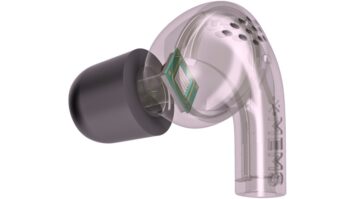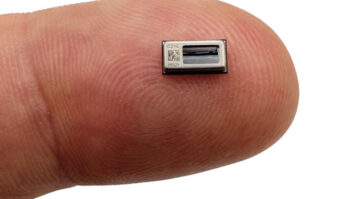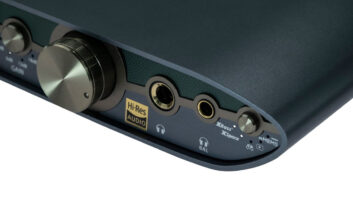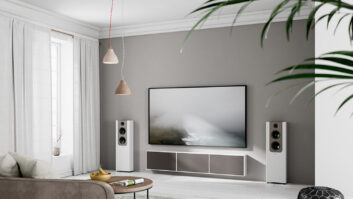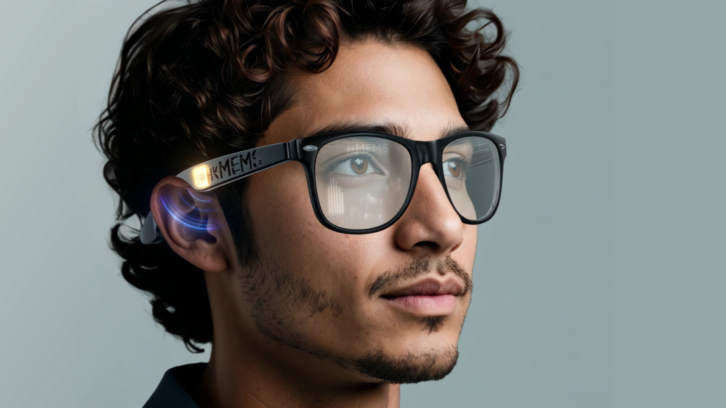
xMEMS Labs has unveiled the proof-of-concept for its latest MEMS micro speaker, the Sycamore. The new 1mm MEMS near field speaker is designed to deliver full-frequency audio capabilities for small devices equipped with open or free-air speakers such as smart watches, smart glasses, car headrest speakers, laptops PCs, open wireless speaker (OWS) earbuds, or “any other small, mobile form factor that engineers dream up,” according to xMEMS marketing and business development VP Mike Housholder.

Sycamore, like xMEMS’ previous Cypress chip designed for closed in-ear ANC earbuds, is based on the company’s “sound from ultrasound” platform and designed to deliver full-range audio for open-air listening devices but in a much smaller form factor. Measuring just 8.41 x 9 x 1.13 mm and weighing just 150 milligrams, Sycamore is one-seventh the size of a conventional dynamic-driver package, one-third the thickness, and requires less back volume area.
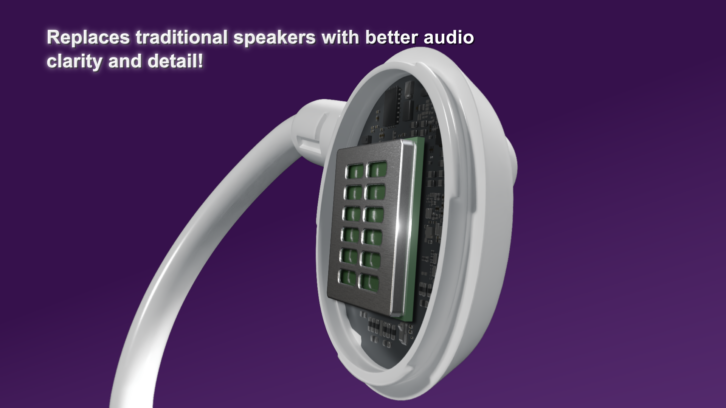
Technically, Sycamore offers first-order low-frequency roll-off that can match the mid-bass performance of legacy drives while offering as much as 11dB headroom in sub-bass extension. Housholder also says that Sycamore pushes the performance envelope on high-frequency sound by as much as 15dB above 5KHz over legacy drivers.
According to the Housholder, the Sycamore will be available not only in a square form factor but in varying aspect ratios to fit the needs of varying devices. The all-silicon, solid-state µSpeaker is IP58-rated for use in devices designed for more rugged and sweaty use cases, such as sports earbuds. Sycamore’s architecture also delivers hi-fi sound without any impact on battery life.

Housholder notes that many of the devices in which Sycamore can be deployed tend to be fashion- or comfort-first, but now can deliver higher quality audio. “We want to uplevel the audio experience for fashion-first products,” Housholder explained. “Products that really value style don’t want to look like a tech product. We take out the magnet and the coil speakers, so we’re taking some weight out of something that’s going to sit on your ears or in your ears or on your wrist for long periods. This may be the only solution that can get you to that thinner profile.”

While Sycamore enables higher quality open speaker sound in a smaller, lighter, and more flexible form factor, it also shortens device development time.
“We have a headphone designer on staff who worked for Turtle Beach, and for many many years he would say that he’d spend at least three to four design iterations and about six to eight weeks iterating the back volume to get that dynamic driver to just right,” Housholder noted. With Sycamore, “that six to eight week of multiple design iterations goes away so time to market gets a lot faster.”
Housholder reports that the company has reached the tape-out stage for Sycamore and is on schedule to sample the chip for ODMs and OEMs early in 2025, Mass production by TSMC and Bosch is due to begin in October 2025, enabling the first consumer devices to be available by 2026.
See also: Why Sound from Ultrasound Is Poised To Revolutionize TWS Earbud Design And Performance




